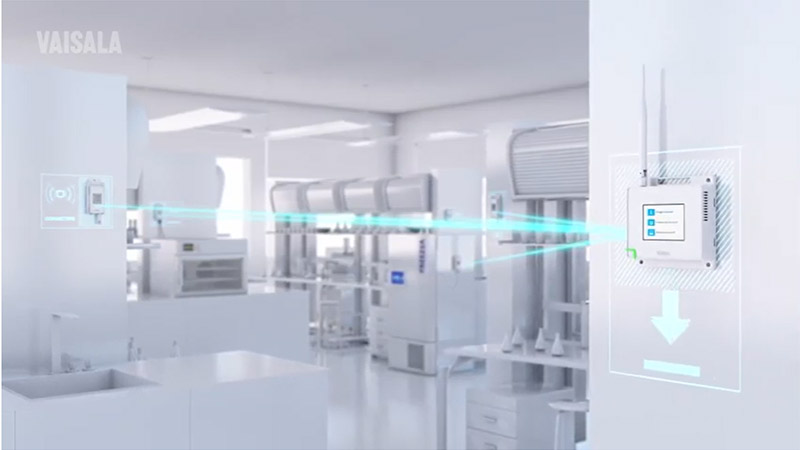Dealing with Temperature Sensor Deviations
We recently received a question from a reader who found an out-of-specification temperature sensor that had been monitoring a controlled environment for one year before being taken out of service for calibration. This is a common scenario. What's less common is the temperature sensor was found out of specification. This blog shares our email exchange, a link to the relevant regulation, and a link to a blog that goes into the topic of Instrument Tolerances Vs. Manufacturer's Tolerances.
Dear Paul,
I watched the “Audit-proof your monitoring system” webinar and I have a question...
Recently, we found a temperature sensor to be out-of-specification during calibration. We completed the calibration and made adjustments, but we did not open a deviation. We didn’t open a deviation investigation because the calibration SOP didn’t mention one.
Do you have recommendations on this? Thanks in advance for your advice!
H
Dear H,
If a temperature sensor is found out-of-specification, it is appropriate to investigate to determine any negative impact to quality due to the OOC (out of spec) sensor.
I will refer you to ICH document, Process Equipment, 5.35 in “Good Manufacturing Practice Guide for Active Pharmaceutical Ingredients – Q7” which notes that these types of deviations should be investigated for impact on quality.
Deviations from approved standards of calibration on critical instruments should be investigated to determine if these could have had an effect on the quality of the intermediate(s) or API(s) manufactured using this equipment since the last successful calibration. (5.35)
Of course, it’s correct to follow an SOP, that’s what they are for. But it’s also expected that SOPs follow guidance for industry.
If your SOP doesn’t mention what actions to take if a sensor is noted to be OOS, you have options, including:
• Edit the SOP to add instruction to investigate
• Open a deviation
• Begin CAPA
The most basic question, and perhaps what prompted your question, is: How do you know that the OOS device didn’t have a negative impact on quality? Let me know if you have any follow up questions!
Dear Paul,
Thank you for your quick answer! We have decided to update our SOP, according ICH Topic Q7 - 5.35.
However, we still have the same problem. This sensor is calibrated yearly and within that year it measures several products. It can be based on the fact that there is a sample in the process (IPC) and if it is within specification, then the operation of the equipment is correct. Also, what are your thoughts on a preventive action change to calibration frequency?
Thank you very much!
H
Dear H,
It is good that you have sample data to prove that the product quality was in spec to prove that your process was not affected. This will be a good resolution to your deviation.
As a preventive action, you have a few options… but choosing the best option necessitates some questions:
First, what was your source for the specified accuracy of the probe (your tolerance or acceptance limits for pass/fail during calibration? Second, what is the origin of the yearly calibration interval?
For many the answer to both questions is that these values come from the sensor manufacturer. As a sensor manufacturer (Vaisala), we give these recommendations for best performance. But you don’t need to follow them if they don’t match your process.
For instance, imagine a process such as monitoring a refrigerator that needs a process accuracy of ± 0.5°C. Let’s say we use a sensor capable of ±0.1°C according to the sensor specifications of the manufacturer. If I use the manufacturer’s accuracy specification for my calibration tolerance (±0.1°C), and I see an AS FOUND value that is off by 0.2°C and I have failed my calibration.
In reality, this is a failure on paper only, because I know I only need ±0.5°C for this process. It is wiser to use a calibration tolerance based on the process, especially if my process has wider tolerances than the device is capable of. We have a blog on this topic that goes into a bit more detail: Instrument Tolerances: Manufacturer vs. Process.
Regarding your preventive action, I think you are on the right track. Based on the current deviation shortening the calibration interval makes good sense. You might also consider changing the calibration tolerance (acceptance criteria) if you are able to do so. After a few cycles of passing the calibration at 6 months (with no adjustment) you may have a good rationale to take the calibration frequency back to one year.
Best Regards,
Paul Daniel
Vaisala Senior Regulatory Expert
Learn more about:
Webinar
A Future-Proof Monitoring System: Ensuring Your System can Adapt to the Future of GxP
GxP Monitoring is changing in parallel to the evolving landscape of modern GxP manufacturing. It is critical that we understand this evolution so that we can select future-proof monitoring solutions.
Watch Now








Add new comment